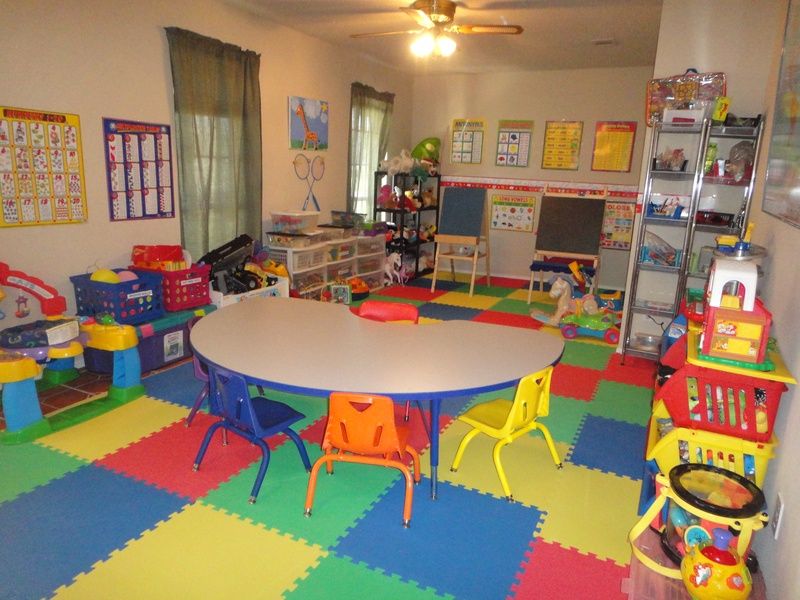Tips for designing your early childhood classroom space
 The #classroom is more than a location: an intentional arrangement reveals hidden messages about the learning environment and behavioral expectations. Understanding the role of the classroom environment in children's learning and how to create and maintain cozy environments will help educators support children’s development in all areas. Keep reading for tips for designing your early childhood classroom space.
The #classroom is more than a location: an intentional arrangement reveals hidden messages about the learning environment and behavioral expectations. Understanding the role of the classroom environment in children's learning and how to create and maintain cozy environments will help educators support children’s development in all areas. Keep reading for tips for designing your early childhood classroom space.
The design and layout of the physical #classroom_environment, including indoor and outdoor spaces, equipment selection, and room arrangement, have a significant impact on children's learning and behavior, as well as caregivers' ability to fulfill their responsibilities. A well-designed environment facilitates children's interaction with their surroundings, materials, and people. When designed properly, the environment allows children to move freely and engage in various curriculum activities with minimal intervention from caregivers. This allows adults to focus on developing activities, observing children, and meeting their individual needs. Effective environments also make children feel invited and encouraged to explore and learn.
The arrangement of the classroom is a crucial aspect of creating an effective learning environment as it contributes to classroom management and supports teaching and learning. The physical atmosphere of the classroom can help prevent behavior issues and enhance learning. The structure of the classroom is important for both teachers and students, as it can impact their behavior. A well-structured classroom management plan and design can improve learning outcomes and behavior.
The classroom arrangement serves as the foundation for children's learning. Every part of the classroom should be utilized for activities that support learning. Consideration should be given to the spatial structure of the classroom, seating arrangements, movement within the classroom, and overall atmosphere. The classroom should also address the academic, social, and emotional needs of the students. The physical arrangement of the classroom should be reflective of the children and consistent with the needs of all learners.
The learning environment plays a crucial role in the daily functioning of a program. It should be a reflection of the curriculum and the children and families involved. As a childcare provider, consider how the environment represents the community and the people who spend time there. Ensure that spaces where routines occur are safe and comfortable for everyone. Make accommodations when necessary for individuals with disabilities. A highly effective classroom arrangement is based on the functionality of the room, with clearly defined interest centers and separate areas for different types of activities. Wide traffic patterns allow for easy movement and minimize interference. Traffic patterns can also set the tone for the room and influence activities and behaviors throughout the day.
An effective environment supports children's interaction with the classroom space, materials, and others in it. Creating visual boundaries and organizing toys in your classroom is just the start. Learn more and update your preschool or daycare with training at ChildCareEd!
With hundreds of child #care_courses_online to choose from you will be sure to find one that can help you through any challenge you may be facing. Check out the courses below or visit our website for a full list of courses.
- Effective and Engaging Classroom and Home Daycare Room Arrangements
- Tips for designing your early childhood classroom space
- The Power of Play: Unleashing Potential in Early Childhood Education
- The Importance of Outdoor Play in Early Childhood Education: Nurturing Growth and Learning in Nature
- Managing Behaviors in the Early Childhood Education Classroom
- Creating a Positive Learning Environment
- How to Encourage Creativity in Early Childhood Education
- How to Design Centers That Promote Both Play and Learning
- The 90-Hour Certification Requirement for ECE in Maryland
- Creating a Positive and Calm Classroom Environment
- 🖍️Ready, Set, Set Up! A Daycare Teacher’s Guide to a Dreamy Classroom
- Play, Explore, Grow: Fresh Curriculum Ideas to Spark Joy in Your Preschool or Daycare
- 🌟Little Hands, Big Learning: Why Play is the Secret Ingredient to Early Childhood Growth
- 🌟 How Can You Protect Children’s Health and Happiness in Every Learning Environment?
- Designing Learning Spaces that Inspire Curiosity, Not Chaos
- The “Less is More” Playroom: Simplifying Environments to Reduce Overstimulation